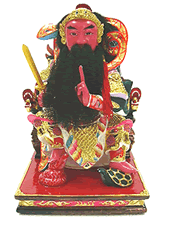Relaxation in Taijiquan: Bibliography, Links, Resources, Quotations, and Notes. By Mike Garofalo.
Song or Sung: Loose, Relaxed, Open, Yielding, Free, Responsive. A Defining Characteristic of Taijiquan.
"First, last, and always the student must relax. Various calisthenics aid him in
achieving this. All rigidity and strength must be emptied from the upper torso and must sink to the very soles of the feet, one of which is always firmly rooted to the ground. Without proper relaxation the student can never hope to achieve the trueness of the T'ai-chi postures. The student relaxes completely and breathes as a child - naturally through the nose, the diaphragm being aided by the abdominal rather than the intercostal muscles. Man's intrinsic energy, the ch'i, should be stored just below the navel. The mind directs this energy throughout the body according to need. But the ch'i cannot circulated in an unrelaxed body."
- Robert W. Smith, Chinese Boxing: Masters and Methods, 1974, p. 26.
"Human beings are
soft and supple when alive,
stiff and straight when dead.
The myriad creatures, the grasses and trees are
soft and fragile when alive
dry and withered when dead.
Therefore, it is said:
The rigid person is a disciple of death;
The soft, supple, and delicate are lovers of life.
An army that is inflexible will not conquer;
A tree that is inflexible will snap.
The unyielding and mighty shall be brought low;
The soft, supple, and delicate will be set above."
- Lao Tzu, Tao Te Ching, Section 41 (76)
Translated by Victor H. Mair, 1990
